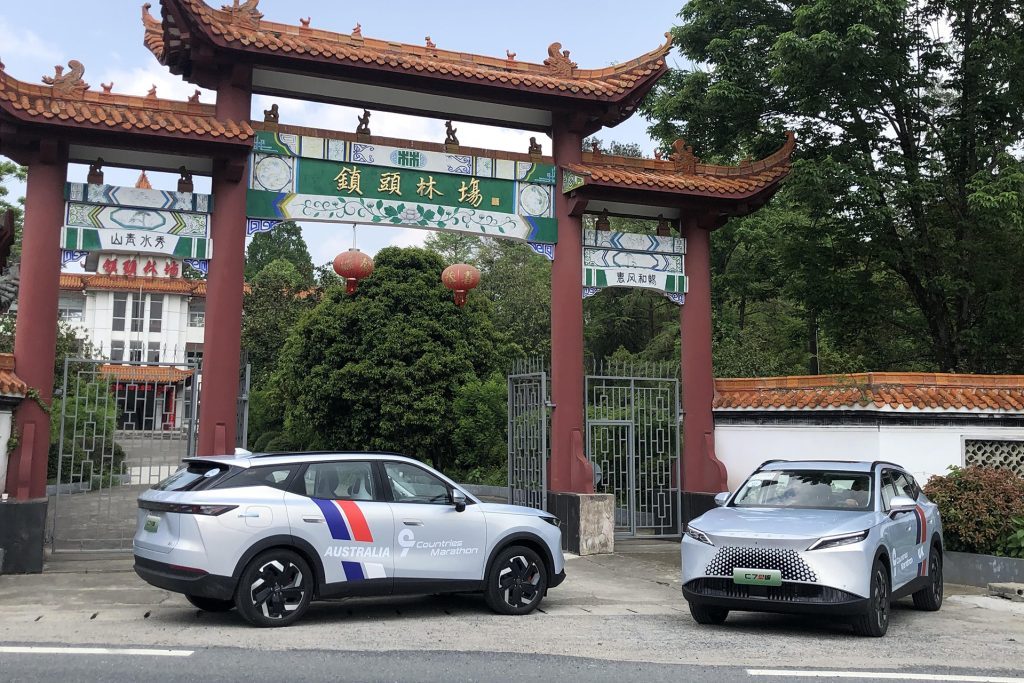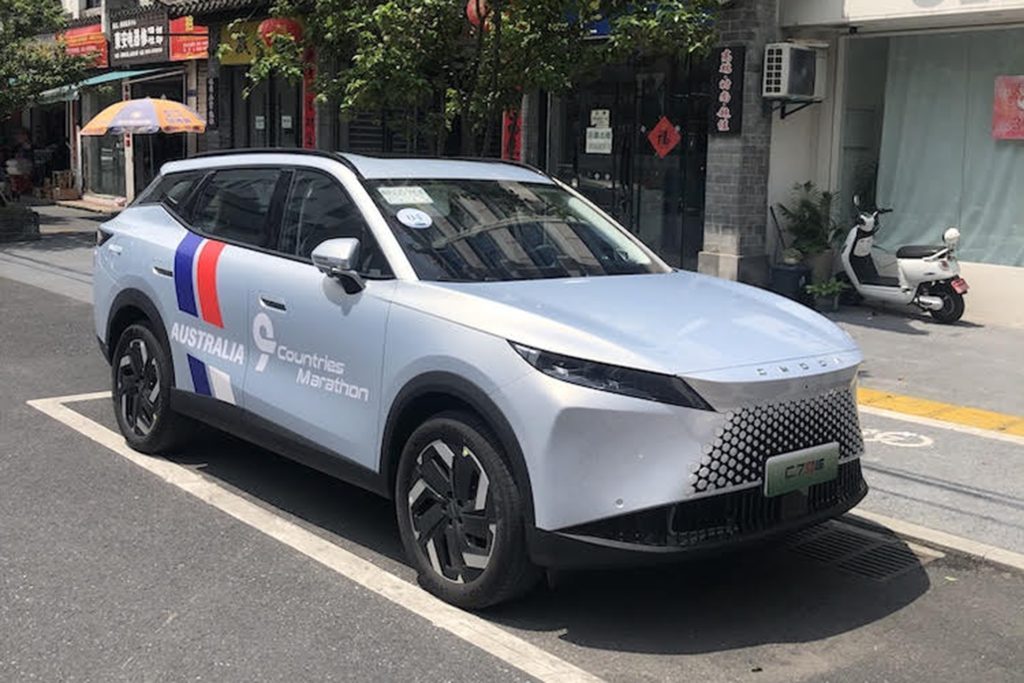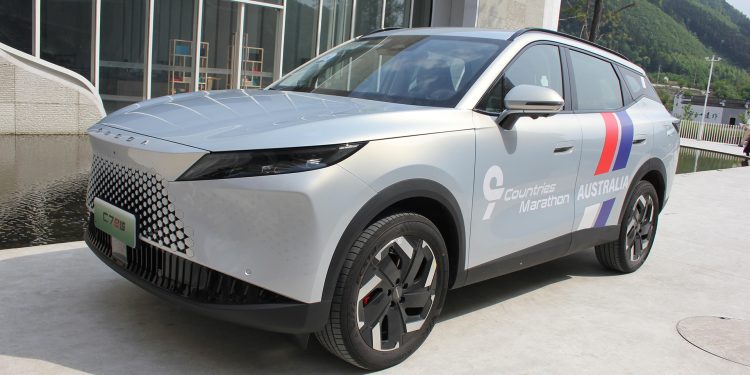Driving the 2025 Omoda C7 PHEV from Shanghai to Wuhu
Words by Robert Barry
Driving a 2025 Omoda C7 PHEV from Shanghai to Wuhu was a test of the vehicle and the mettle of motoring journalists from nine countries, who were challenged to equal or better the car’s claimed range of 1200km.
I was joined by expatriate Australian, Stuart Masson, The Car Expert UK editorial director in the #4 Team Australia car, with Omoda Jaecoo product manager Alaric Wang and Omoda Jaecoo UK PR representative Hannah Burgess. Following the Auto Shanghai show, the Omoda brand gathered the teams at the historic Shanghai Glass Museum on the outskirts of the city for the official start of the endurance marathon. To ensure there was no cheating, the Omoda staff asked the journalists to officially seal both the fuel filler flap and the EV port flap with some ceremonial tape.

The two-day endurance marathon saw the teams challenged by torrential weather, miscreant motorists and pedestrians and some very dodgy truck driving on local roads. However, the standard of driving on the tolled, high-speed highways was far superior. The #4 car left Shanghai with 59km on the odometer, 97 per cent battery charge and the distance to empty reading 1109km. From Shanghai, the drive route headed through Hangzhou and onto Qiandao Lake on day one, then onto Xuancheng and finally Wuhu. The car arrived in Wuhu with 822km on the odometer, 19km of battery range and 414km distance to empty for a range total of 1177km. A team from Brazil won the Omoda C7 endurance challenge with a total driving range of 1457km, while a team from Italy scored the worst result with a total driving range of 1119km.
Read more Omoda 7 PHEV another crossover with huge weekend range
After the event concluded, the nine teams were greeted at Omoda Jaecoo headquarters by the brand’s chief executive Mr Shawn Xu. Xu thanked the media for their efforts and confirmed that the Omoda Jaecoo brand will continue to develop its super hybrid technology to bring yet more fuel-efficient vehicles to export markets.
Omoda C7 PHEV facts and figures
At 4.6 metres long with a 2700mm wheelbase, the mid-size Omoda 7 PHEV offers comfortable seating for four people, and rear legroom that is usually found in much larger vehicles. The boot will accommodate two full-size and two carry-on-sized suitcases.

The #4 Team Australia car offered a similar level of interior comfort and specification as the Jaecoo J7 SHS Summit, which NZ Autocar recently drove in Australia. The uniquely quartic-shaped steering wheel and seats were finished in a light grey leather-like upholstery, and the full-length sunroof is likely to be offered on export vehicles. A positive note about the C7 is that it is one of the few cars where the head-up display is visible through prescription polarised sunglasses. Two unique party tricks exclusive to the C7 were the ability of the central screen to move across the dashboard and park itself directly across from the front seat passenger. The other was the climate control system’s ability to ionise the air quality and also allow the choice of three fragrances for the cabin.
The Omoda C7 uses the same 1.5-litre plug-in hybrid powertrain as the Jaecoo J7 PHEV, with the manufacturer claiming outputs of 105kW/215Nm for the Miller Cycle petrol engine and 150kW/310Nm for the electric motor. Combined output is reputedly 258kW/524Nm. In hybrid mode, the two units work in unison to deliver a total claimed driving range of 1200km.
Power is sent to the front wheels via a single-speed Dedicated Hybrid Transmission (DHT). The powertrain offers various driving modes including pure electric, series, parallel and energy recovery. Ordinarily, it allows drivers to enjoy pure electric operation at low speeds and is ideal for city commutes under 40km/h while providing efficient fuel performance at speeds above 80km/h.
Travelling up to 90km on a charge, the Lithium Iron Phosphate battery has a capacity of 18.3kWh and can be charged from 30-80 per cent at up to 40kW on a DC fast charger in 20 minutes. Above 30 per cent charge, the C7 can run as a pure EV up to speeds of 120km/h.

Omoda C7 PHEV driving impressions
Much like its sibling the Jaecoo J7 PHEV, the Omoda 7 is quiet and powerful and sits solidly on the road, with excellent steering response and strong brakes. At the legal limit of 120km/h on the Chinese highways, it felt composed and quiet. Even when torrential rain hit on the first day’s run between Shanghai and Quindao Lake, the C7 didn’t flinch, it just kept calm and carried on. The high-quality interior impressed with its fit and finish, and the overall build quality of the car was excellent for what we understood was a pre-production vehicle.
It augurs well for the future of the brand here. The Omoda C7 PHEV is expected to land in New Zealand in the first quarter of 2026, but final specifications and prices are yet to be confirmed.





